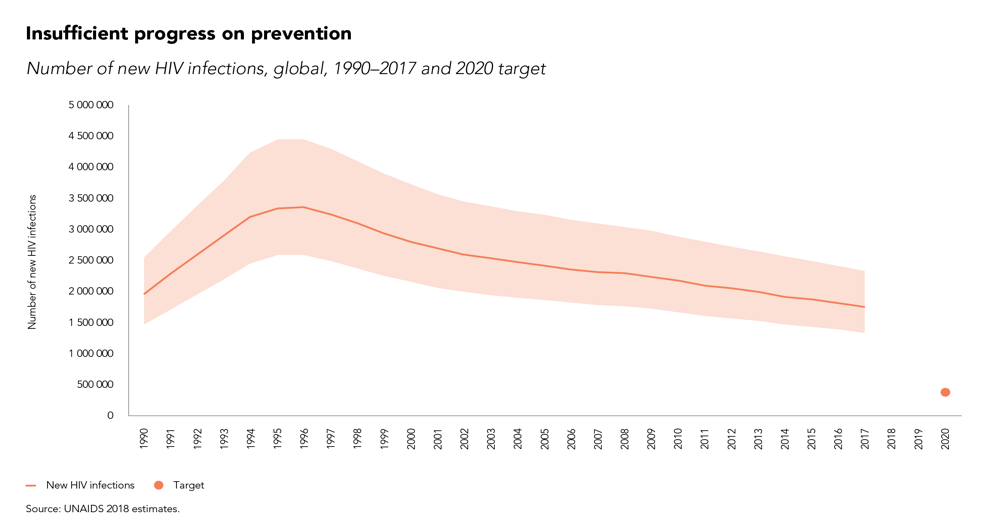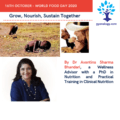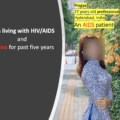To comment or receive more such wisdom, please register on www.gyanalogy.com/login

World Health Organisation: World AIDS Day 2020
Theme: Global solidarity, resilient services
UNAIDS: Global Solidarity and Shared Responsibility!
Centers for Disease Control and Prevention: Ending the HIV/AIDS Epidemic: Resilience & Impact
Founded in 1988, World AIDS Day was the first-ever international day for global health. Every year, United Nations agencies(UNAIDS), WHO, governments and civil society join together to campaign around specific themes related to HIV.
One interesting thing is the theme of 1988 the first world AIDS day, is quite similar to 2020 theme, the only thing probably new is to let us get united to fight AIDS and COVID together (Global Solidarity and Shared Responsibility)!
Theme 2020 Global solidarity, shared responsibility
Theme 1988 A world united against AIDS
World AIDS day aims at,
- Activities to enhance societal and patient awareness across the globe and the gravity of the current situation.
- Red ribbon, the universal symbol of awareness of, support for and solidarity with people battling HIV.
- Challenges, voices and choices of people’s life combating HIV being heard and felt.
- Professional societies/ organizations and patient groups at a community level raise awareness and mobilize funds and support in the fight against the disease.
World AIDS Day remains as quite relevant even today as it’s always been in the past, reminding people and governments that HIV has not gone away totally and it continues to be a devastating problem at a family and societal level.
The core issues that need to be addressed currently are,
- increased funding and resources directed towards AIDS care.
- to increase awareness of the impact of HIV on people’s lives.
- to totally end stigma and discrimination and to improve the quality of life of those surviving with HIV.

AIDS/HIV global Key facts
- HIV continues to be a major global public health issue, having claimed almost 33 million lives so far. However, with effective HIV prevention, diagnosis, treatment and care, HIV infection has become a manageable chronic health condition, enabling people to lead long and healthy lives.
- An estimated 38.0 million people were living with HIV at the end of 2019.
- However, not everyone can access HIV testing, treatment and care. Notably, the global targets for 2020 are at risk of being missed unless rapid action is taken.
- 690,000 people died from HIV-related causes in 2019 and 1.7 million people were newly infected.
- Increased HIV vulnerability is often associated with legal and social factors, which increases exposure to risk situations and creates barriers to accessing effective, quality and affordable HIV prevention, testing and treatment services.
- There is no cure for HIV infection. Early diagnosis and effective antiretroviral drugs (ARVs) can control the virus and help prevent onward transmission to other people.
- Between 2000 and 2019, new HIV infections fell by 39% and HIV-related deaths fell by 51%, with 15.3 million lives saved due to ART.
HIV and COVID-19
- A new analysis by UNAIDS has revealed the potential impacts that the COVID-19 pandemic could have in low- and middle-income countries around the world on supplies of the medicines used to treat HIV.
- The lockdowns and border closures imposed to stop COVID-19 are impacting both the production of medicines and their distribution, cost and to supply issues.
- A six-month complete disruption in HIV treatment could lead to more than 500,000 additional deaths from AIDS, with new children getting infected
The global community has agreed to aim to end the AIDS epidemic by 2030, and under the UNAIDS “90-90-90” targets, countries work toward achieving, by 2020, “90% of people living with HIV knowing their HIV status; 90% of people who know their HIV-positive status on treatment; and 90% of people on treatment with suppressed viral loads.”
Key messages
1. Renew our fight to end AIDS to realign our strategies to eradicate AIDS by 2030 even though we dint do well in COVID scenario in global targets of 2020. On 1 December, we renew our call to do better.
2. Use innovative HIV services to ensure continued HIV care extended therapies and telemedicine.
3. Engage and protect nurses, midwives and community health workers.
4. Prioritize the vulnerable – children, youth and key population.
5. Reducing the stigma and discrimination in society.

To comment or receive more such wisdom, please register on www.gyanalogy.com



